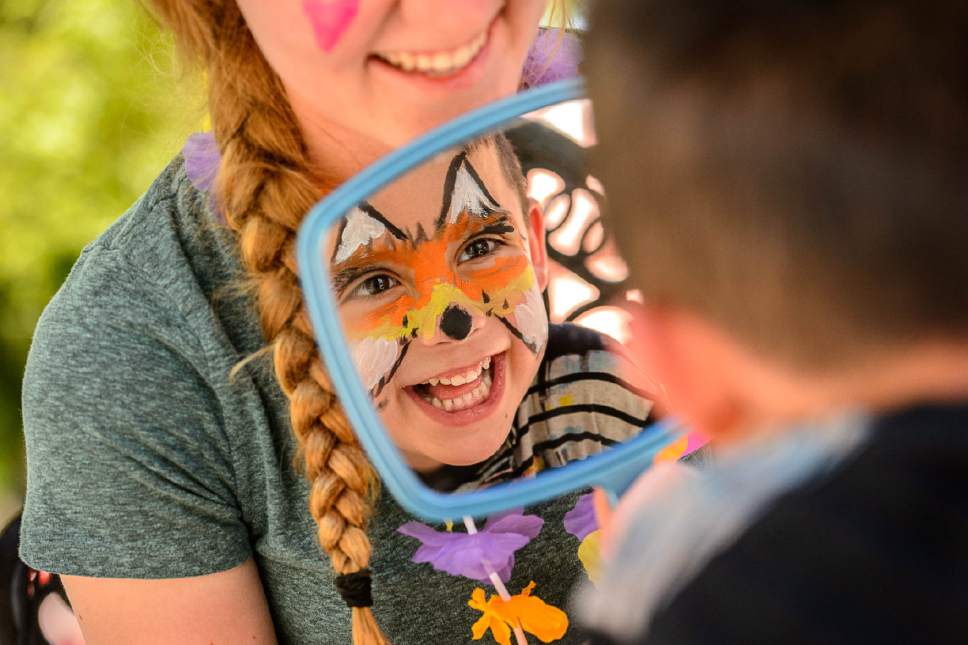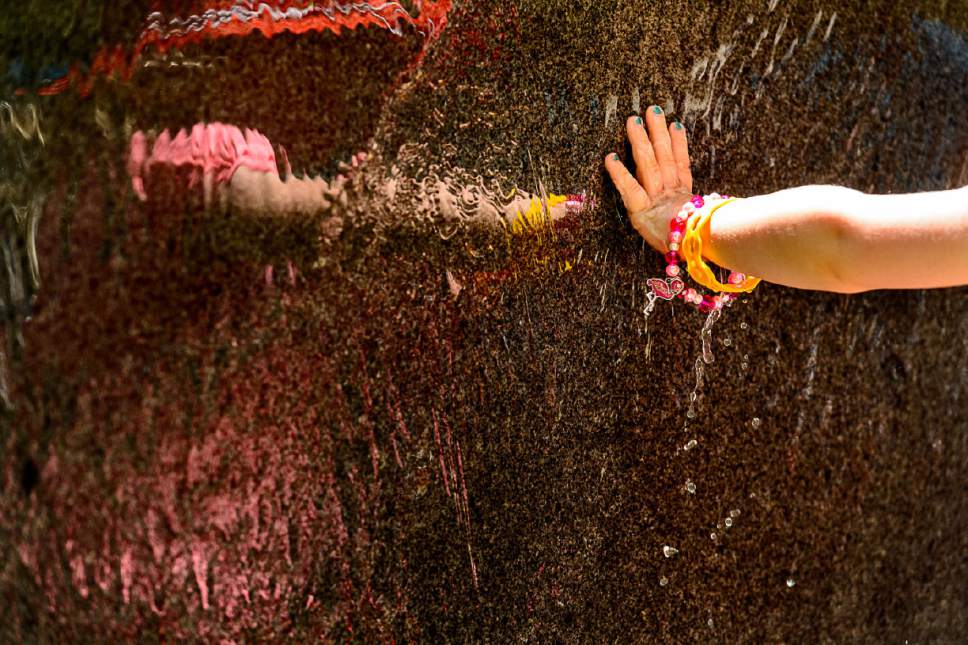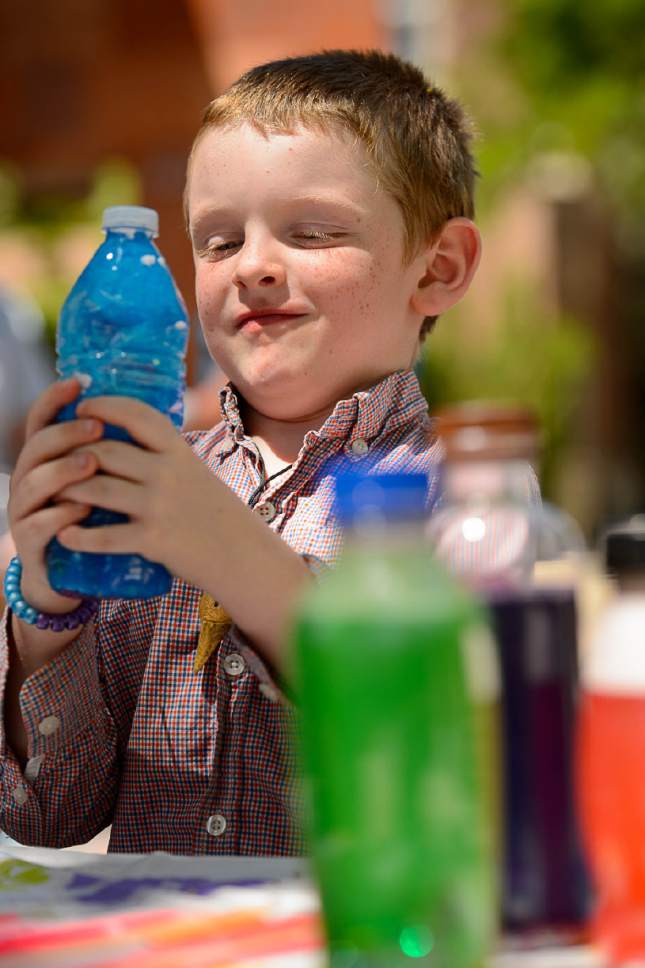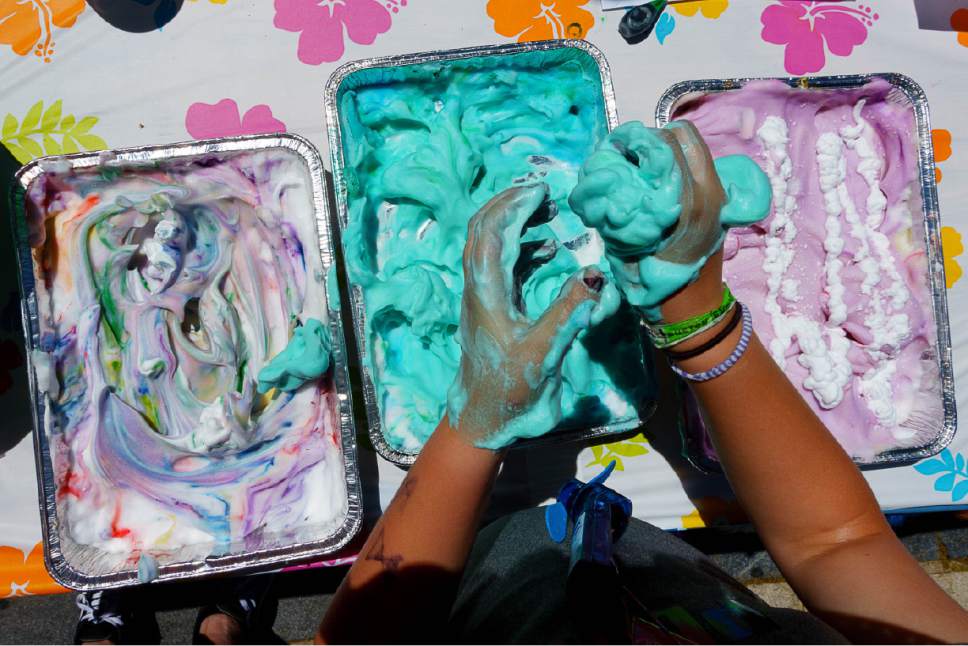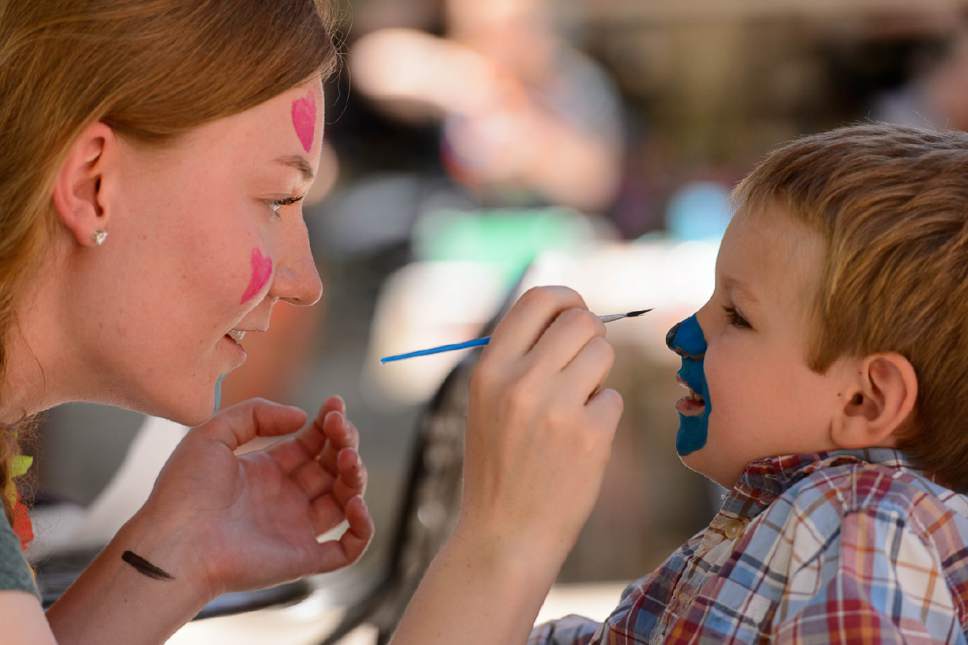This is an archived article that was published on sltrib.com in 2017, and information in the article may be outdated. It is provided only for personal research purposes and may not be reprinted.
Troy Fryer peered into a mirror, admiring the fox that had been painted onto his face.
"What does the fox say?" 6-year-old Troy sang quietly as he made fierce, happy and squinting faces into the mirror.
But at Westminster College's 10th annual Family Fun Day for Children with Autism, Troy didn't want to be the only decorated face at the table. He took a brush from Westminster student Rachel Kuhr and began painting hearts all over her face, to match the one she had put on her cheek. He periodically held a mirror up for her to see his work, while his parents beamed a few feet away.
"A year ago or nine months ago, he wouldn't have done this," said Troy's father, Jason. A carnival is not the most natural fit for Troy. Like many autistic children, he is sensitive to sound, and the family often brings noise-canceling headphones to public events.
With a quiet vibe and an array of activities designed to provide sensory outlets, the Family Fun Day, held Saturday at the Westminster campus commons, is a yearly chance for families to unwind and play in an atmosphere where the needs of children on the autism spectrum are anticipated and embraced.
Children jumped in a bouncy house; shook bags of cream, sugar and ice into ice cream; and played with tubs of slime.
The event also serves as a sort of practicum for students in Westminster's class on autism, taught by special education professor Shamby Polychronis. Students planned and operated the activity centers after spending the monthlong class learning how autism manifests and different perspectives on what being on the spectrum means: Is it a "disease" to be cured? Is it one of many variations of whatever "normal" is?
"It introduced us to the world of autism in a way that allows us to see it as part of us, part of society, part of the human experience," Kuhr said.
Near the face-painting station, a young boy apprehensively approached the coloring book table. Three college students had prepared an array of published books, as well as blank pages, to give children a chance to express themselves however they wished. The students smiled, welcomed the boy and pulled out a chair for him to sit.
Suddenly the boy dropped to the floor and murmured objections to his mother, who pulled him away.
Student Ebony Tyler immediately recognized what prompted the child's distress.
"Mental note: Be mindful of the sound the chairs make," she said to herself, wincing at the scrape of the metal chairs against the pavement. She recalled seeing one mother place a child in a chair and lift it off the ground to move the child into position to color.
"Lesson learned," Tyler said.
The Fun Day also can be a good learning experience for the siblings of children with autism, said Christina Money, whose 6-year-old son Robert fished for a toy prize with a rod covered in crinkly paper. Robert's 3-year-old brother Mark, pictured on a large poster hanging above the Autism Council of Utah's booth, ran his hands happily through water streaming over a fountain.
"For siblings, it's hard for them to understand why a child has problems with speech or social skills," Money said as Robert lined up behind Troy Fryer's 9-year-old brother Abram at the face painting station. "This gives them a chance to see other kids in the same situation."


